Learn how to make your own Homemade Vegan Kimchi with this Korean-inspired recipe. It’s spicy, tangy, and full of flavor. Typically served as a side dish with Korean meals, it’s easy to prepare with just a few ingredients. A delicious way to add probiotics to your diet!
Looking for more Korean-inspired dishes? Check out my Vegan Kimchi Stew, Spicy Korean Tofu Soup, and Korean Spicy Tofu. These recipes bring the perfect balance of spice to every bite. Try them out and bring a bit of Korea into your kitchen!
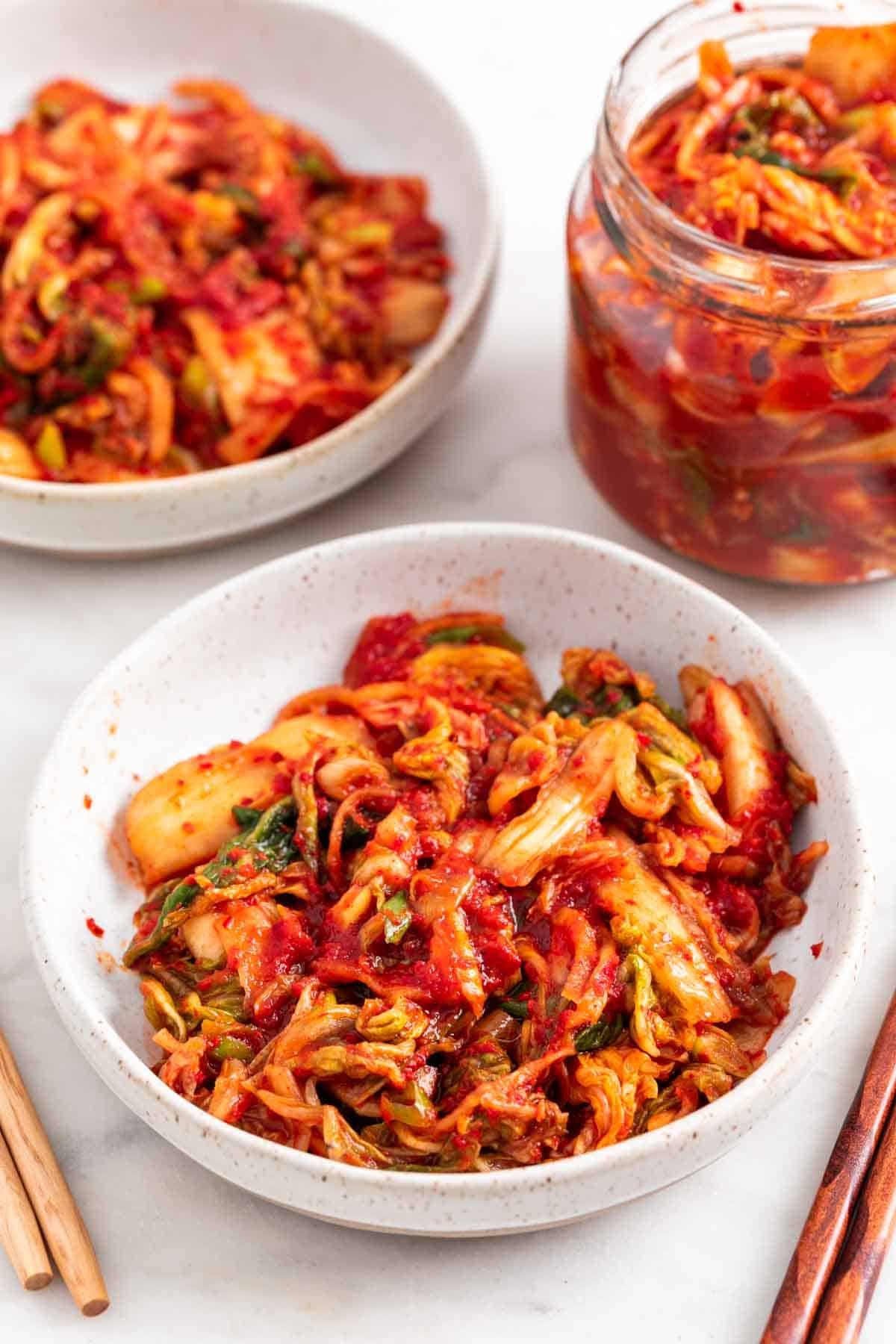
Making your own homemade vegan kimchi is easier than you think! All you need are a few basic ingredients, and after letting it ferment for a bit, you’ll have a delicious, tangy kimchi ready to enjoy. It's a fun and rewarding process that adds so much flavor to your meals.
Vegan kimchi is super versatile! You can eat it with rice, toss it in a soup, or add it to stir-fries. It’s also a great side dish or topping for anything that needs a little extra kick. The best part? It’s packed with probiotics, making it a healthy addition to your diet!
Ingredients for vegan kimchi
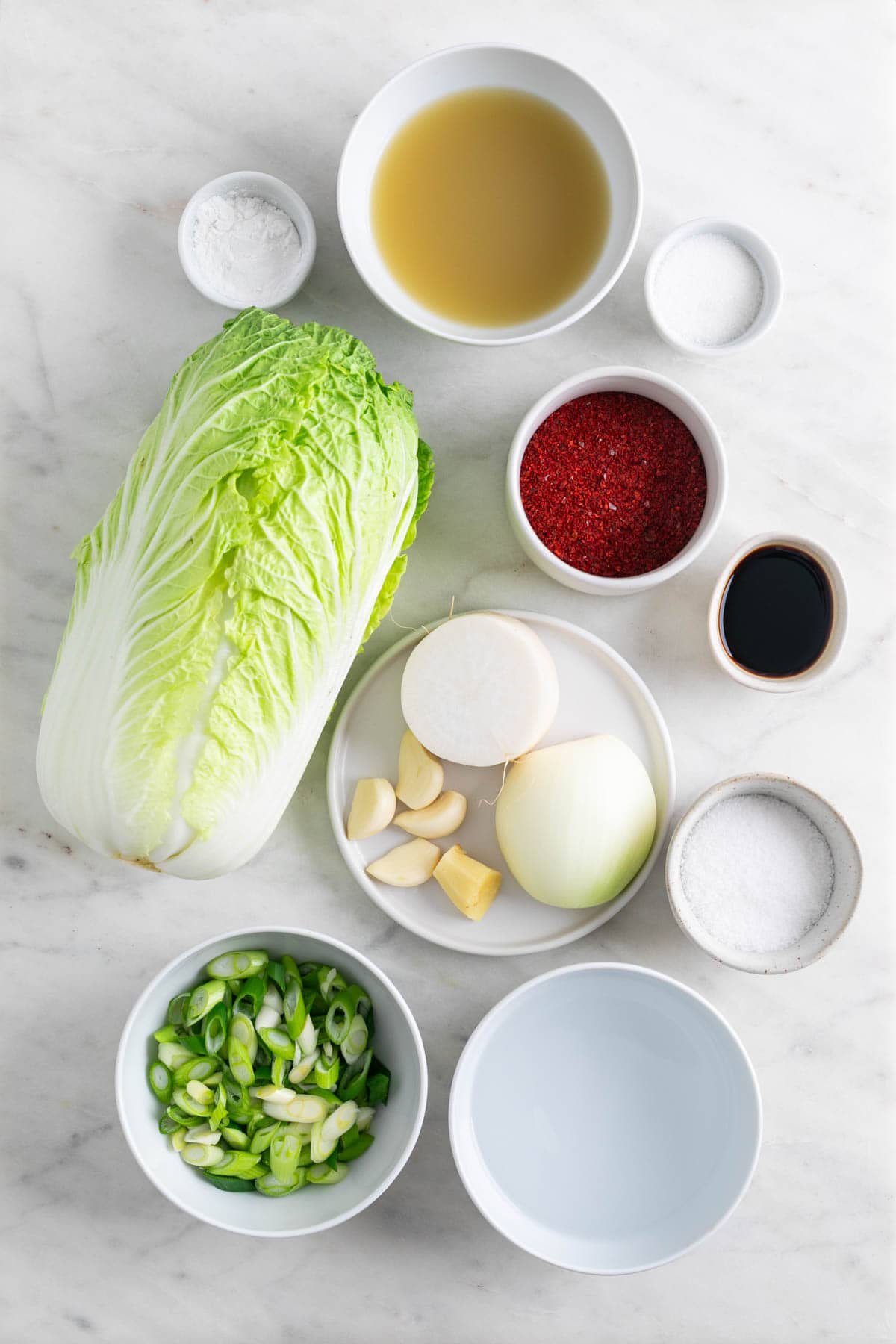
- Napa cabbage: This is the cabbage you need for kimchi! It’s a mild, long cabbage used in Korean cooking. You can find it at Asian grocery stores or sometimes in the produce section of bigger supermarkets. If you can't find it, regular cabbage works, but it won't taste the same.
- Water.
- Salt.
- Glutinous rice flour: This is the best option for making the rice porridge in kimchi, as it gives it the perfect texture. If you can’t find it, you can use regular rice flour or cornstarch as a substitute, but the texture might be a little different.
- Vegetable broth: You can use vegetable broth for extra flavor, but if you don’t have it, water works fine too. The broth will give your kimchi a better taste, so it’s worth using if you can!
- Granulated sugar: I like using granulated sugar because it dissolves easily and helps balance the flavors in kimchi. If you prefer, you can use brown sugar, coconut sugar, or maple syrup as alternatives, but the taste might change a little.
- Onion.
- Garlic.
- Ginger.
- Vegan fish sauce: Traditional kimchi has fish sauce, so it's best to use a vegan substitute, either homemade or store-bought. If you don’t have it, soy sauce or tamari (for a gluten-free version) work great too.
- Gochugaru: This Korean chili flake has a mild, smoky flavor that’s key for authentic kimchi. It gives the right amount of heat without being too strong. Make sure to use gochugaru, as it's essential for the true kimchi flavor. You can find it at Asian markets, online, or in larger grocery stores with an international section.
- Korean radish: You can find Korean radish at most Asian grocery stores or online. If you can’t find it, you can substitute it with daikon or even carrots for a different flavor and texture.
- Scallions: You can find scallions (also known as green onions) at most grocery stores or farmers' markets. If you can’t find them, you can substitute with regular onions or shallots, though the flavor will be slightly different. You can also omit them if you prefer, but they do add a nice crunch and mild onion flavor to the kimchi.
Find the full recipe with exact measurements in the recipe card below.
How to make vegan kimchi
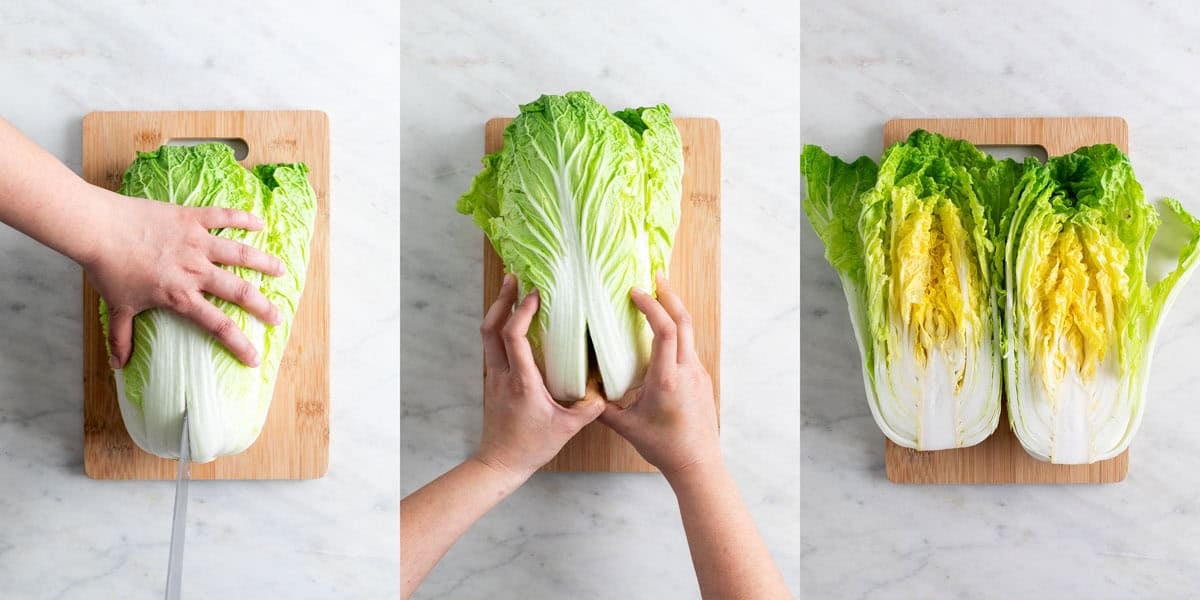
Step 1. Cut the cabbage in half lengthwise. For a more traditional method, make a small cut and separate it by hand.
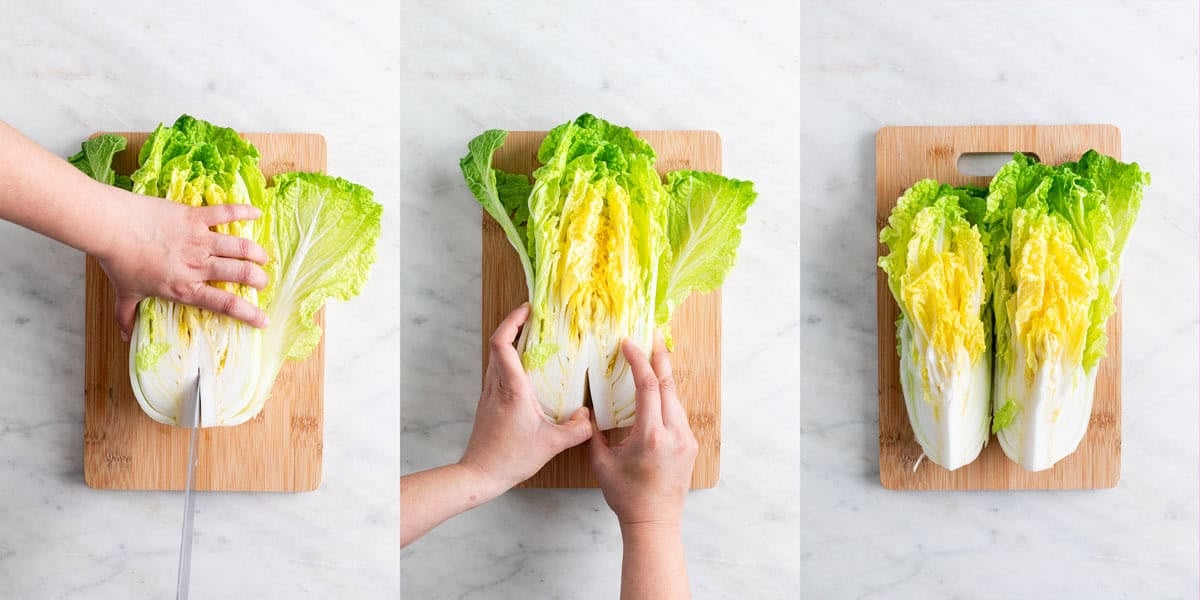
Step 2. Cut each half in half again lengthwise to create 4 quarters. For a more traditional method, make a small cut in each piece and then separate it by hand.
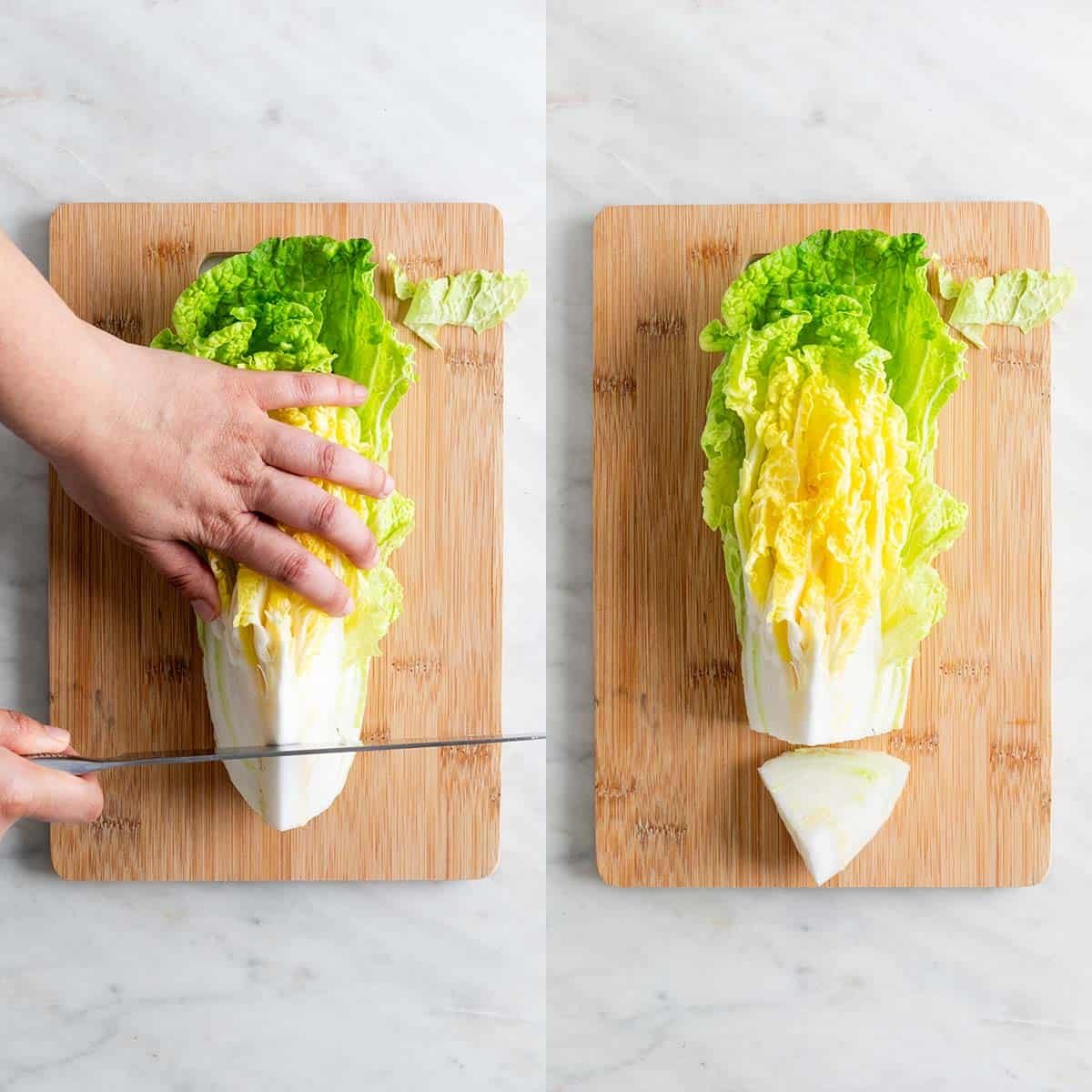
Step 3. Remove and discard the tough core from each quarter.
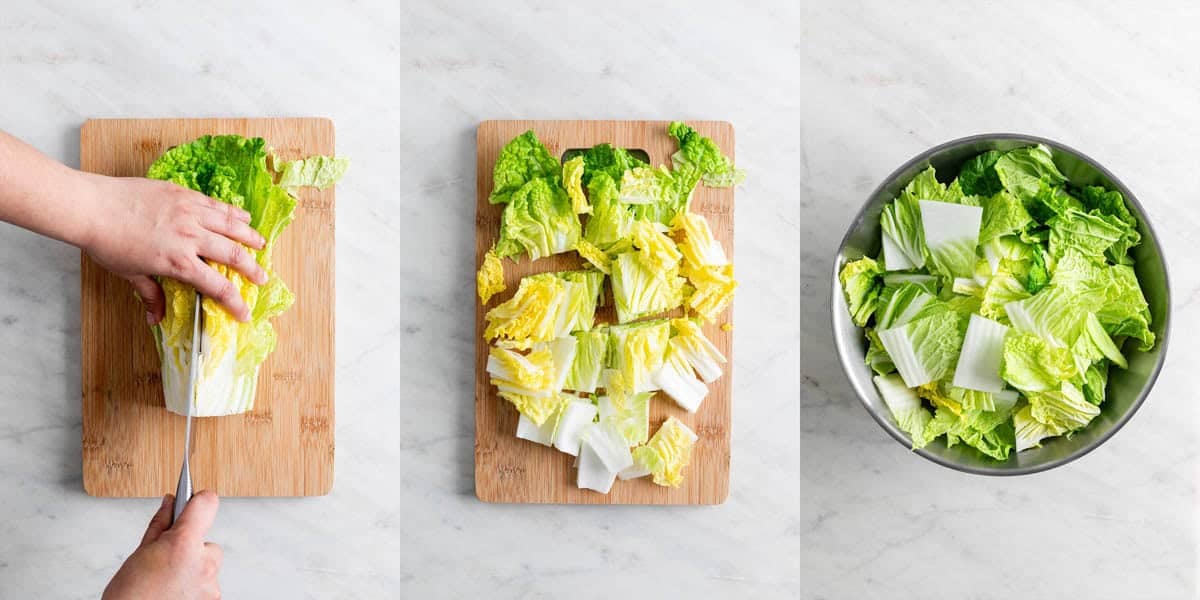
Step 4. Slice the cabbage leaves into bite-sized pieces, around 1 to 1½ inches (2.5 to 4 cm) wide. Place them in a large bowl.
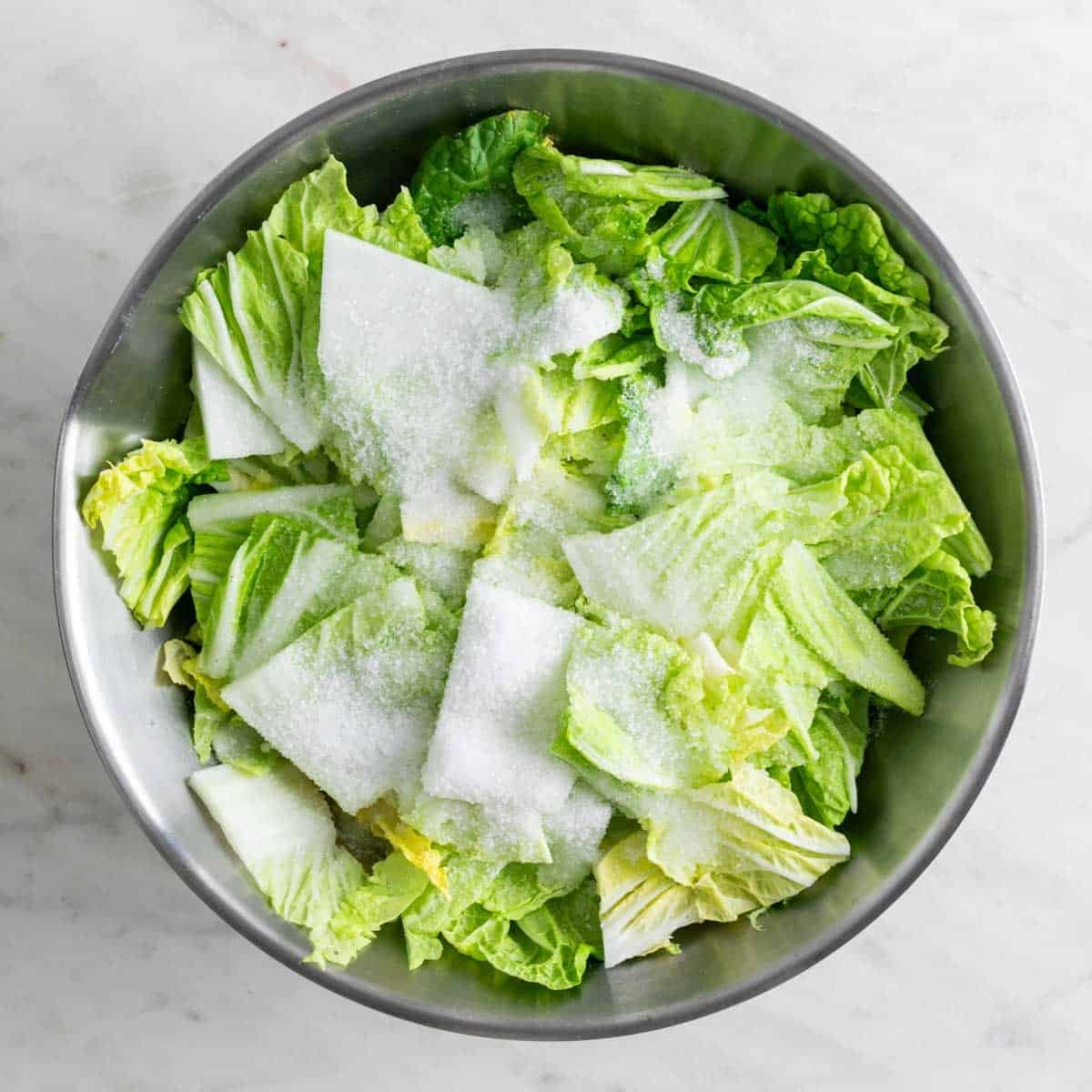
Step 5: Toss the cabbage with the salt and water, mixing thoroughly with your hands.
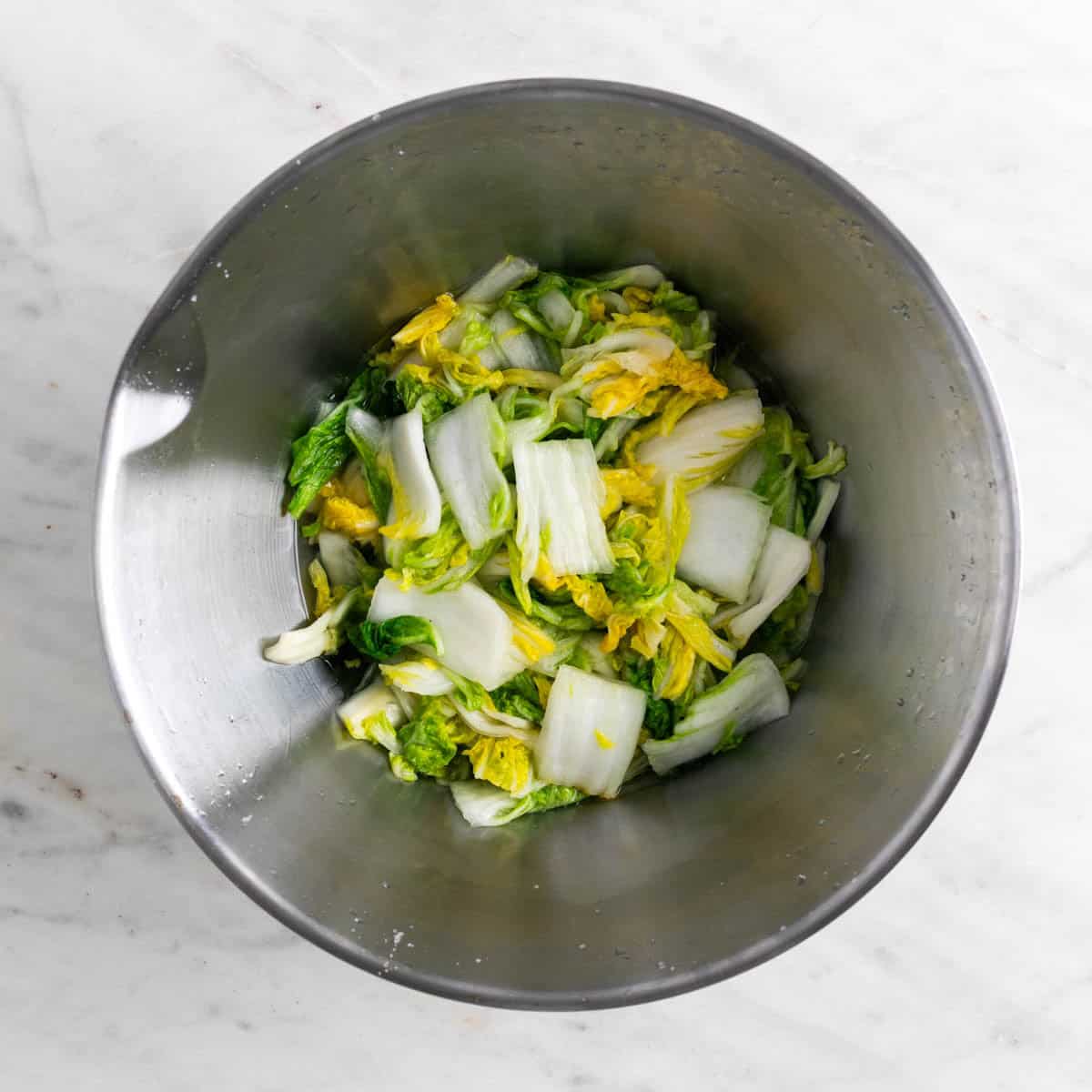
Step 6: Let it sit for 2 hours, stirring every 30 minutes to evenly distribute the salt.
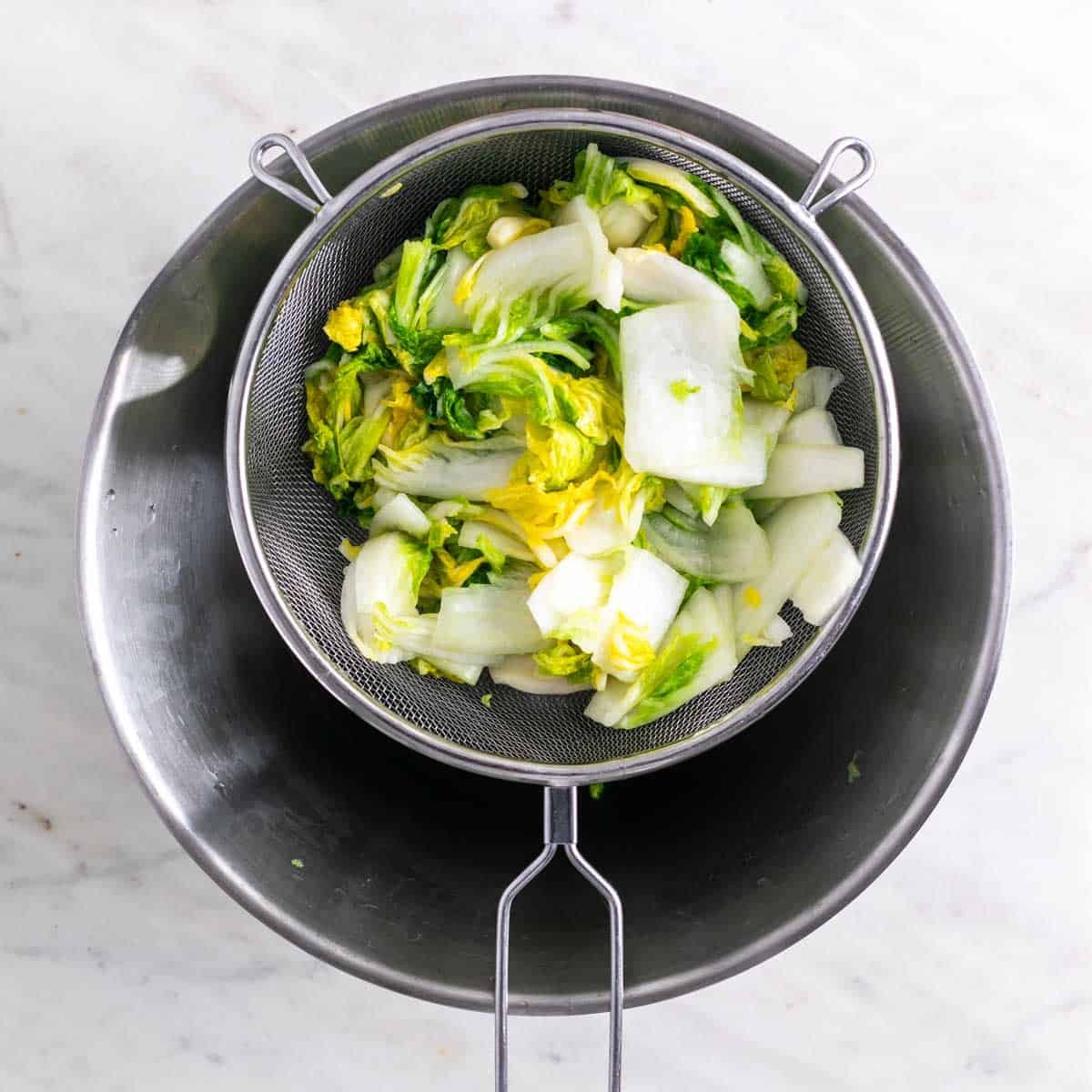
Step 7: Rinse the cabbage 3 to 4 times with cold water to remove dirt and excess salt. Drain it well and set aside.
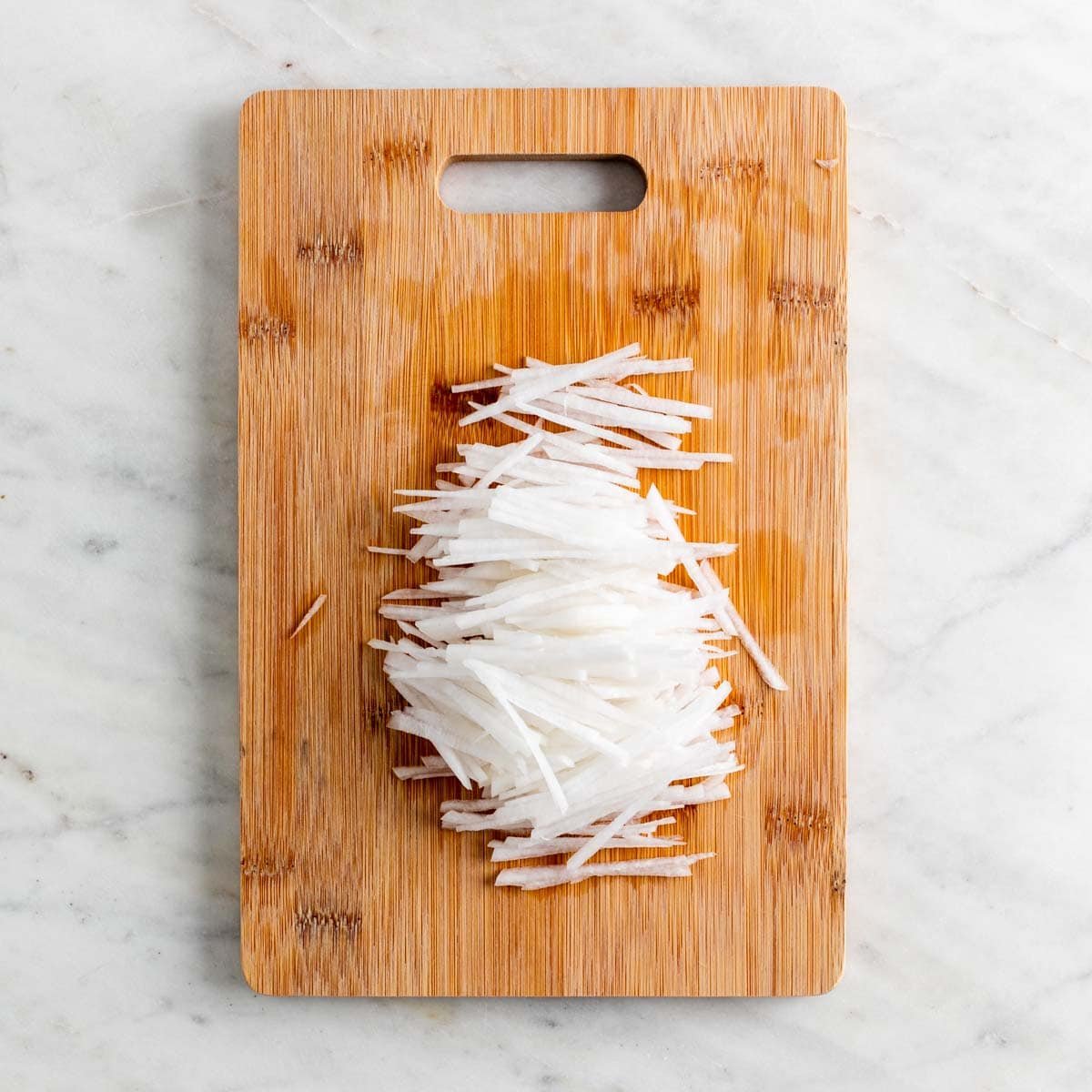
Step 8: Slice the Korean radish into thin rounds, then cut the rounds into matchstick-sized pieces. Set aside.
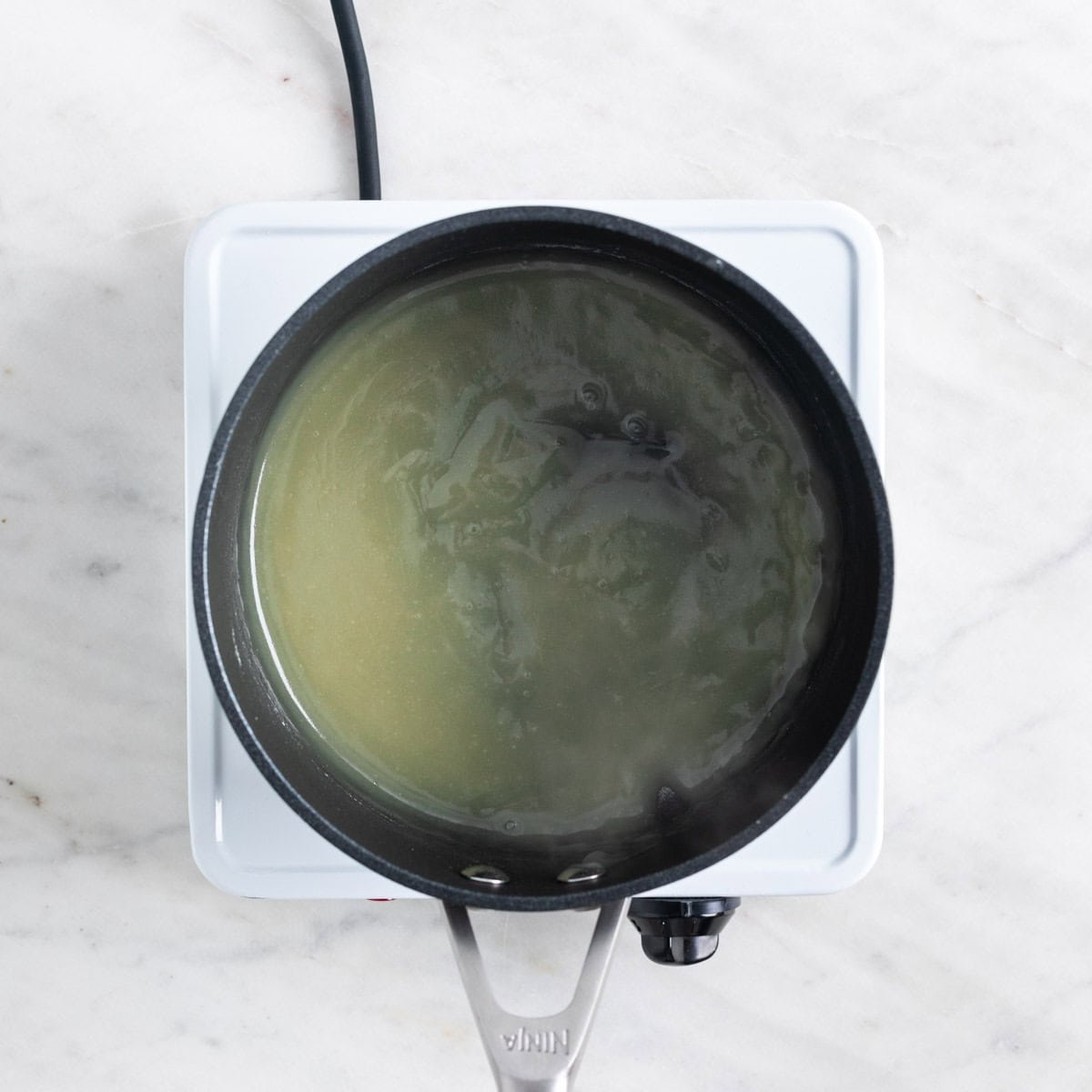
Step 9: Combine the rice porridge ingredients (glutinous rice flour, vegetable broth, and sugar) in a saucepan. Heat over medium-high, stirring until the mixture thickens slightly, about 3-5 minutes. Let it cool.
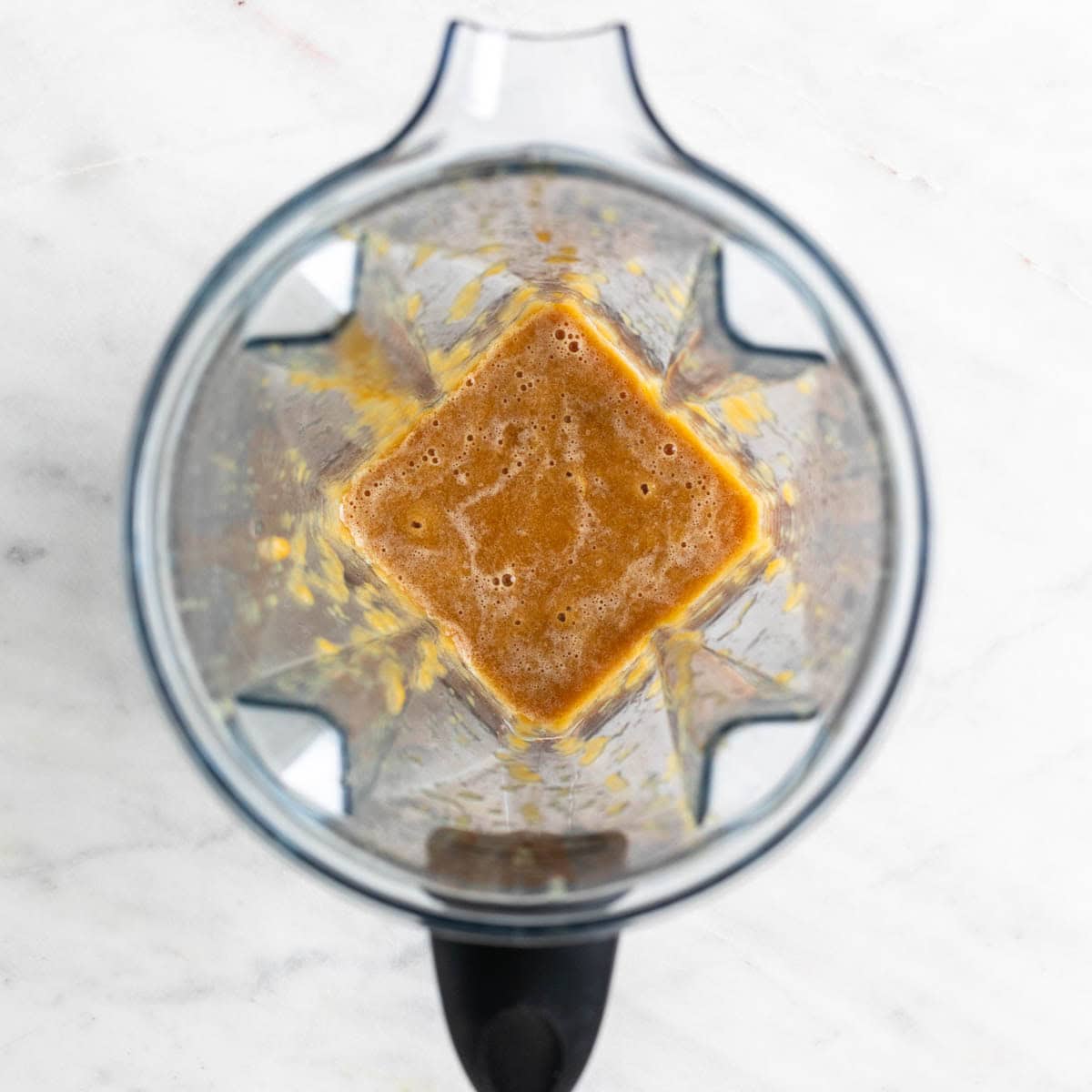
Step 10: Chop the onion into large pieces and add it to a blender or food processor with the cooled rice porridge, garlic, ginger, and vegan fish sauce. Blend until smooth.
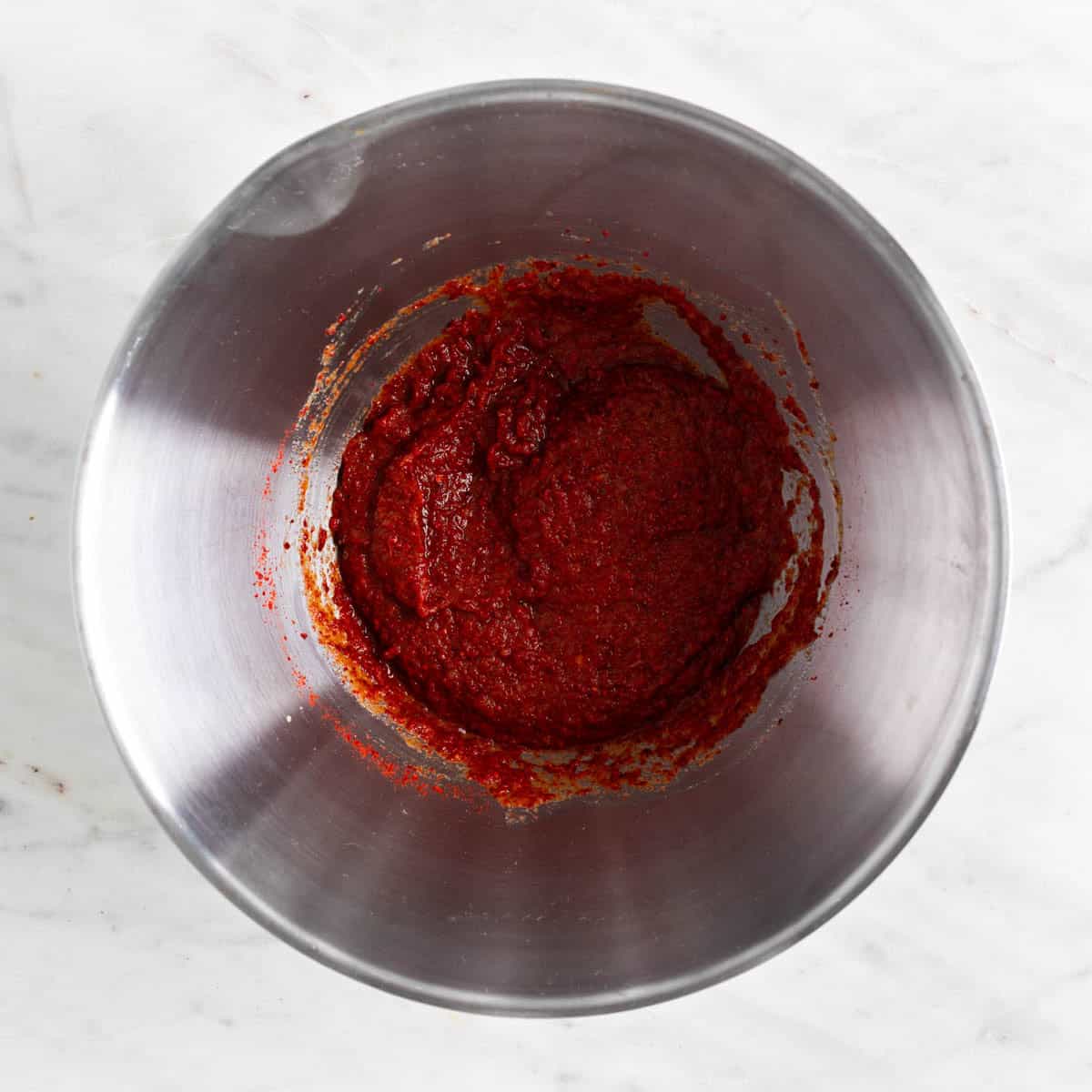
Step 11: Transfer the paste to a large bowl, add gochugaru, and mix everything well.
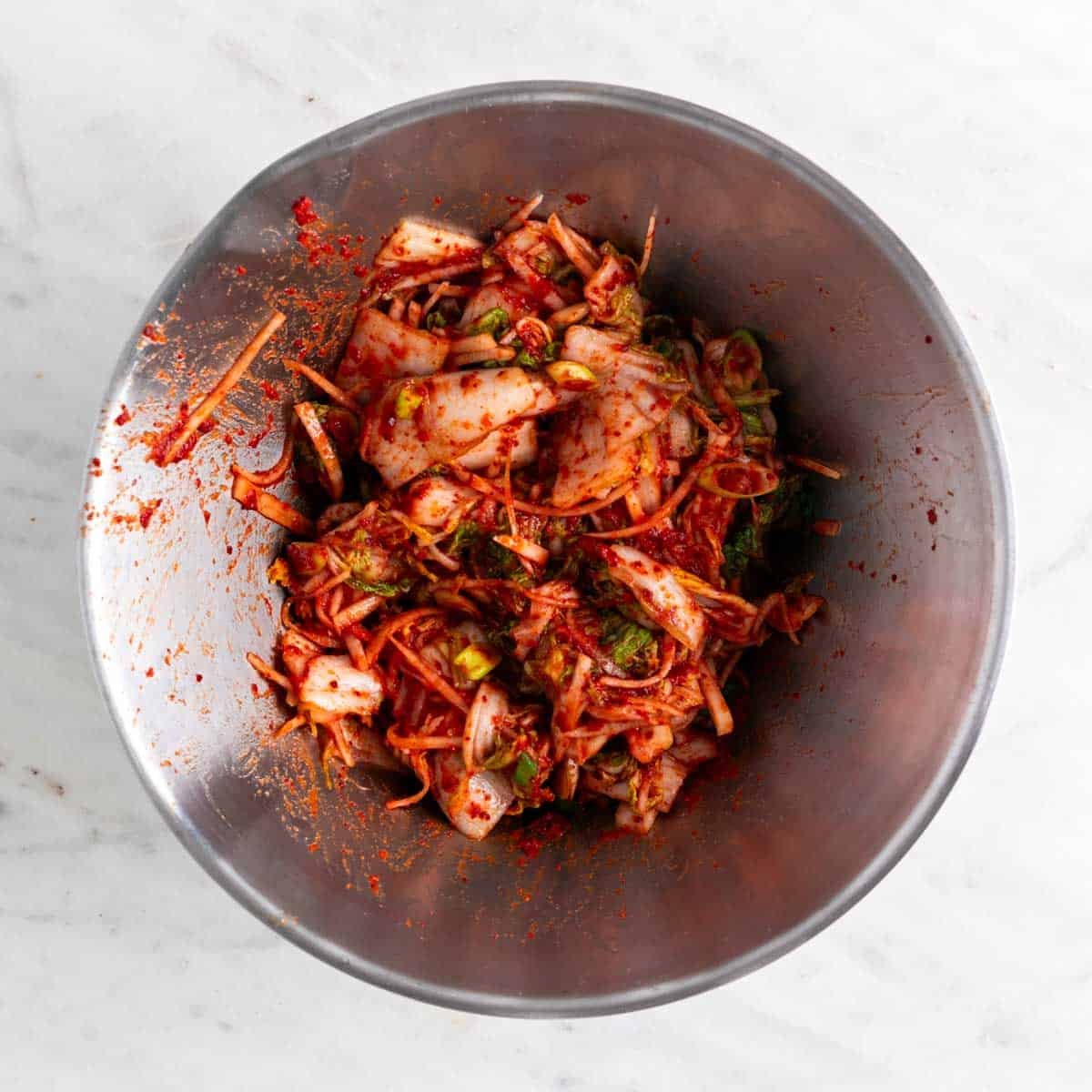
Step 12: Add the cabbage, radish matchsticks, and green onions to the same bowl with the kimchi paste. Mix thoroughly with your hands (wear disposable gloves if you prefer).
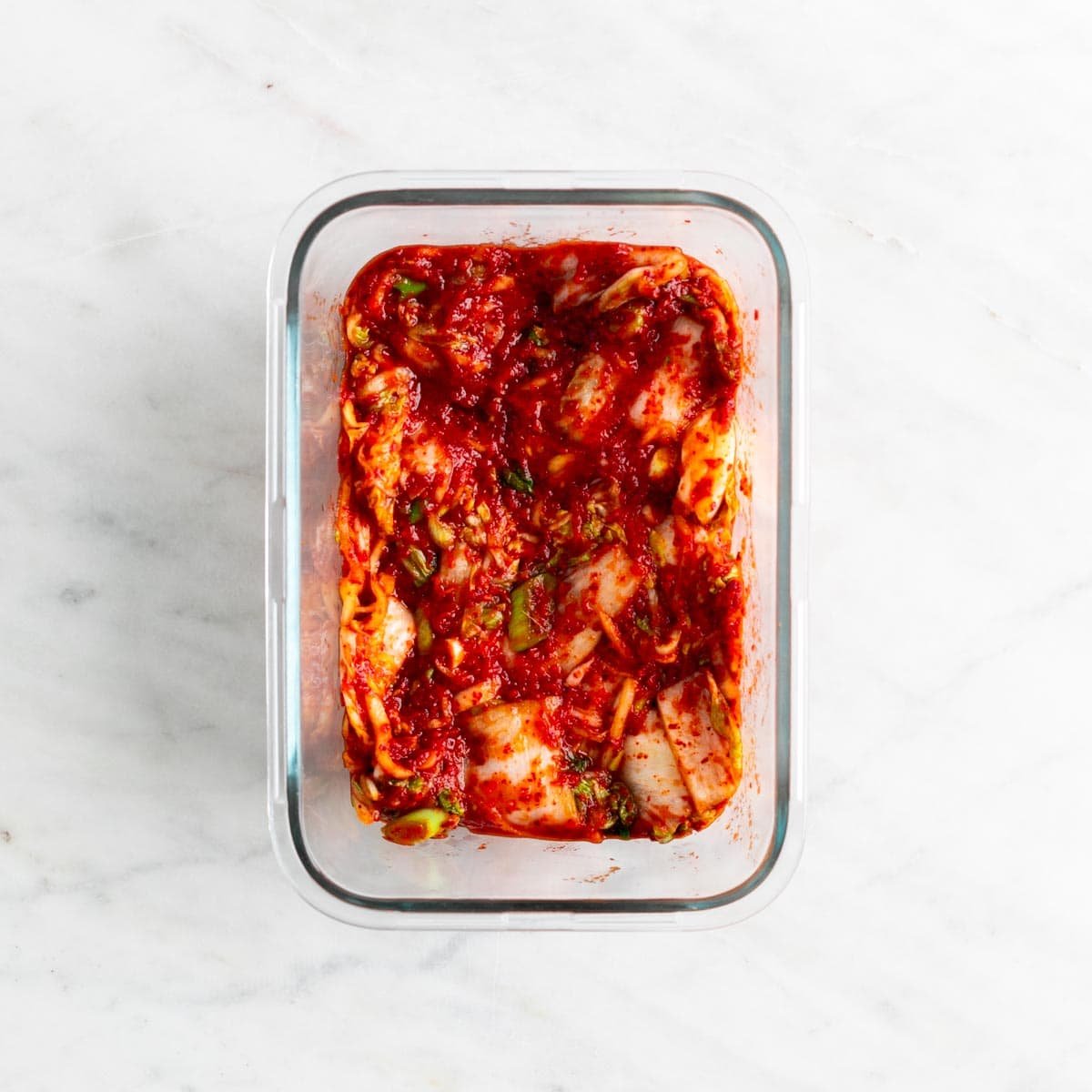
Step 13: Pack the vegan kimchi into an airtight container or glass jars. Press it down firmly to remove air, then seal.

Step 14: You can enjoy the vegan kimchi right away or let it ferment for about 2 weeks in the fridge. For faster fermentation, leave it at room temperature for 1-2 days. Once fermented, keep it in the fridge, where it will continue to get sourer and stay good for months.
Storage instructions
In the fridge: Keep your vegan kimchi in an airtight container in the fridge. It’ll last for months, and the flavors will get stronger over time. In Korea, people often store kimchi in the fridge for over a year! Just keep in mind, the longer it sits, the more sour and intense the flavor gets.
In the freezer: Freezing vegan kimchi isn’t the best idea, as it can change the texture and taste. But if you need to freeze it, put it in an airtight container and try to eat it within 2-3 months. Freezing might affect its original flavor and crunch.
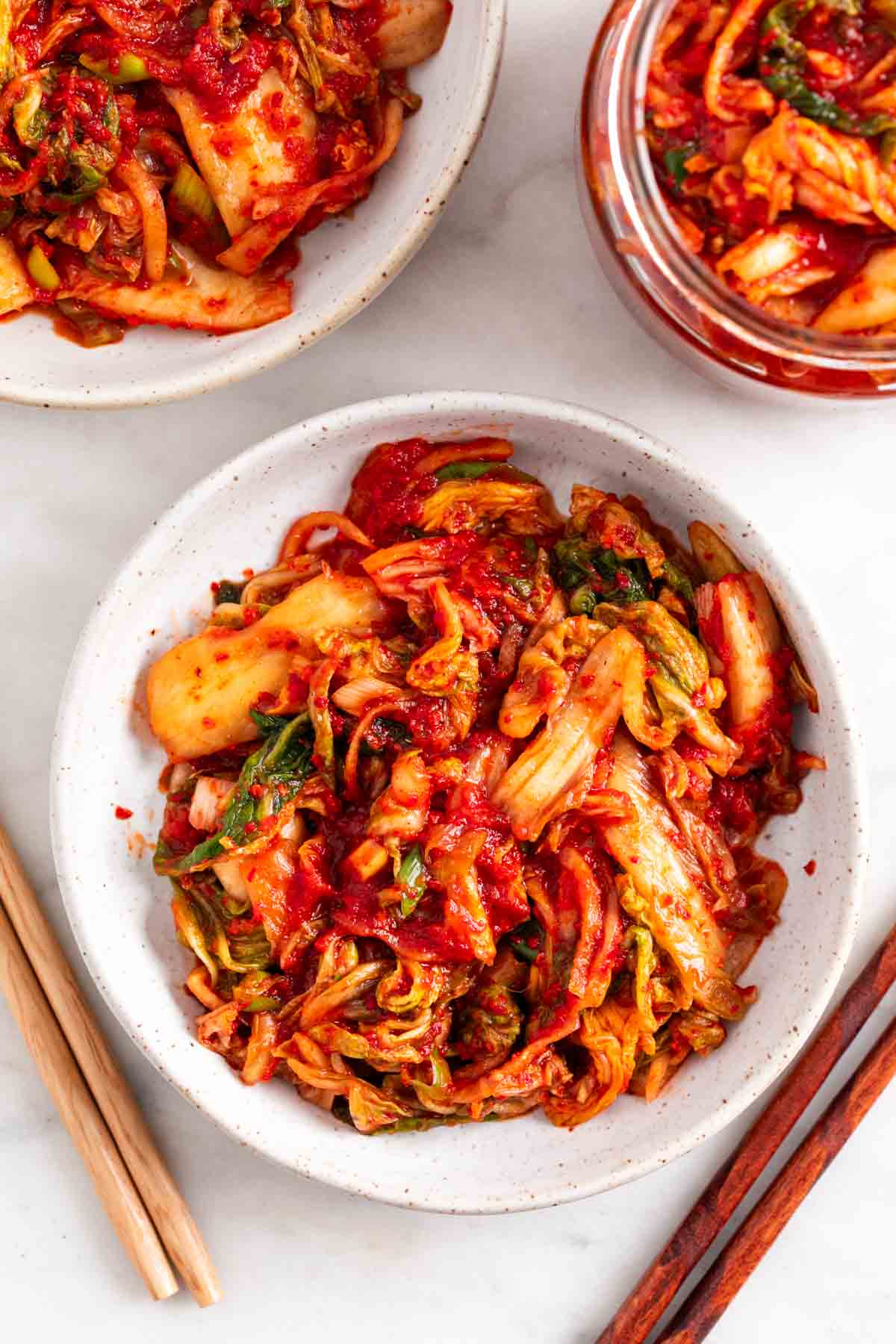
Frequently asked questions
Kimchi is a traditional Korean dish made from fermented vegetables, usually napa cabbage and Korean radish, combined with seasonings like garlic, ginger, chili flakes (gochugaru), and sometimes fish sauce. It has a tangy, spicy, and umami flavor.
Kimchi is typically served as a side dish with Korean meals, often enjoyed with rice, soups, and stews. It's also known for its health benefits, particularly due to the probiotics formed during the fermentation process.
Kimchi is ready when it has fermented to your preferred level of sourness and flavor. You can tell it's ready by tasting it; it should be tangy and slightly sour. If it’s not sour enough, let it ferment for another day or two.
The smell will become stronger as it ferments, which is another sign that it’s progressing. You may also notice bubbles in the jar, indicating active fermentation. The cabbage will soften and turn slightly more translucent as it ferments.
At room temperature, kimchi ferments faster and can take about 1 to 2 days, depending on how warm your kitchen is.
In the refrigerator, kimchi ferments much more slowly, and it can take anywhere from 1 to 3 weeks to develop a deeper, more robust flavor. You can start tasting it after a few days in the fridge, and it will continue to ferment over time.
Kimchi is traditionally served as a side dish with rice or as part of a larger Korean meal. It’s also commonly added to kimchi jjigae (kimchi stew), used in bokkeumbap (kimchi fried rice), or mixed into ramyeon (Korean noodle soup). You can also enjoy it on its own or with jeon (Korean pancakes) for a simple, flavorful dish.
I wouldn’t recommend reducing the salt, as it helps prevent harmful bacteria and is vital for the fermentation process of the cabbage.
Yes, you can! While traditional kimchi typically uses napa cabbage and Korean radish, you can experiment with other vegetables like carrots, bok choy, or even cucumbers. Just keep in mind that different vegetables may affect the texture and flavor, but they can still create a delicious kimchi variation.
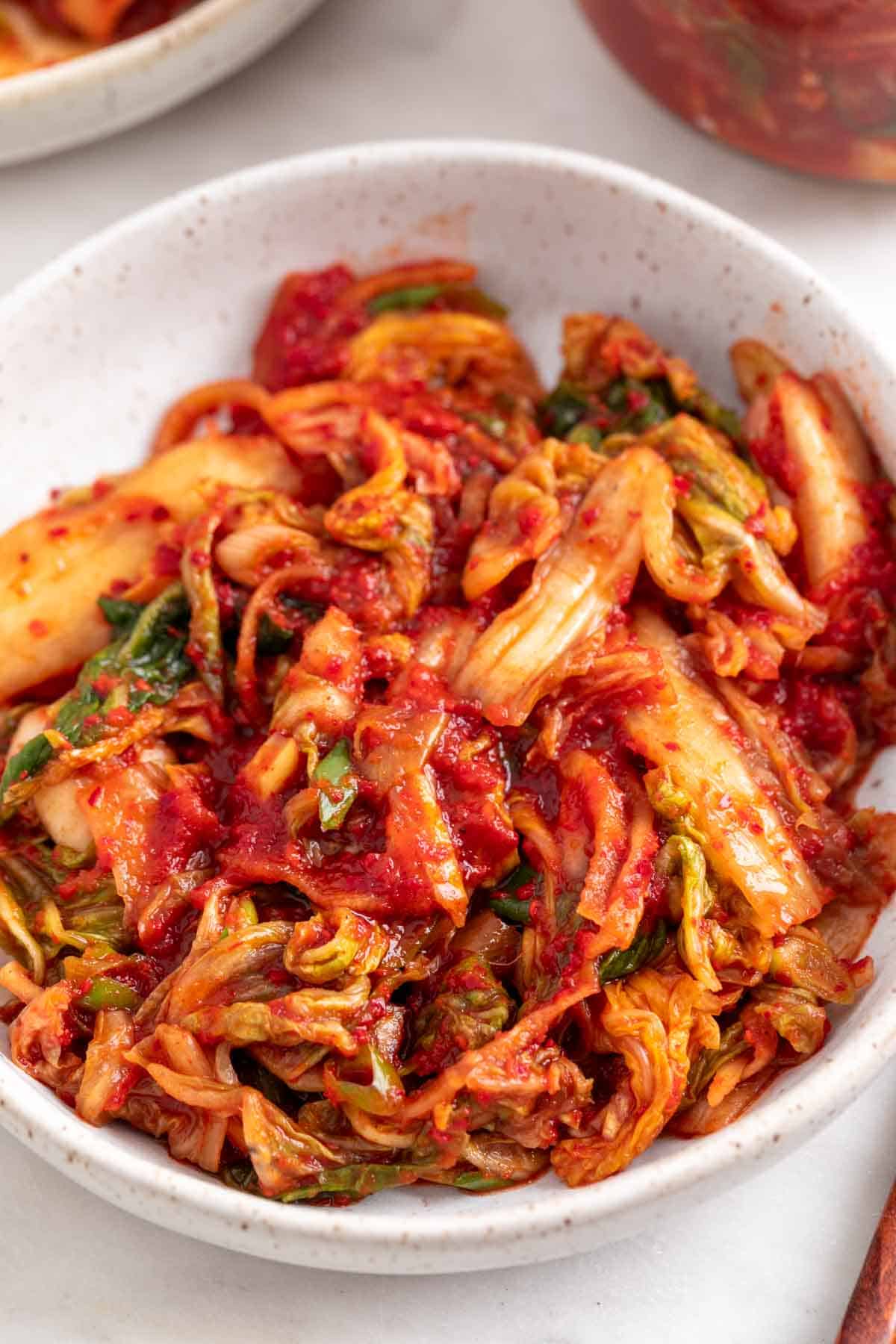
More vegan Asian recipes

Homemade Vegan Kimchi
Ingredients
For salting the cabbage:
- 1 medium head napa cabbage, about 2 pounds or 1 kg
- ⅔ cup water
- ¼ cup salt
For the rice porridge:
- 1 tablespoon glutinous rice flour
- ½ cup vegetable broth
- 1 tablespon granulated sugar
For the kimchi paste:
- ½ onion, peeled
- 4 cloves garlic, peeled
- 1-inch piece fresh ginger, peeled
- 2 tablespoons vegan fish sauce, or soy sauce
- ⅓ cup gochugaru, or ½ cup or 120 ml if you want it extra spicy
Vegetables:
- ⅔ cup Korean radish, about 4 oz or 115 g
- 4 scallions, sliced diagonally
Instructions
- Cut the cabbage in half. Cut the cabbage in half lengthwise. For a more traditional method, make a small cut and then gently break it apart with your hands. Check out more step-by-step photos above in the post for further details.
- Cut into quarters. Cut each half in half again to make 4 quarters. For a more traditional method, make a small cut in each section and break it apart by hand. Check out more step-by-step photos above in the post for further details.
- Remove the core. Carefully remove the tough core from each quarter and discard it.
- Cut the cabbage into pieces. Slice the cabbage leaves into bite-sized pieces, about 1 to 1½ inches (2.5 to 4 cm) wide. Transfer them to a large bowl. Check out more step-by-step photos above in the post for further details.
- Salt the cabbage. Toss the cabbage with salt and water, then mix everything well using your hands to ensure it’s evenly coated.
- Let the cabbage sit. Let the cabbage sit for 2 hours, tossing it every 30 minutes to make sure the salt is evenly distributed.
- Rinse the cabbage. Rinse the cabbage 3 to 4 times under cold running water to remove any dirt and excess salt. Make sure to drain it thoroughly. Set aside.
- Prepare the Korean radish. Slice the Korean radish into very thin slices, then cut them into matchstick-sized pieces. Set aside.
- Make the rice porridge. Combine the rice porridge ingredients (glutinous rice flour, vegetable broth, and sugar) in a saucepan. Heat over medium-high heat, stirring constantly until the sugar dissolves and the mixture thickens slightly, about 3-5 minutes. Remove from heat and let it cool for a few minutes.
- Blend the paste. Chop the onion into large chunks, then place it in a blender or food processor with the cooled rice porridge, garlic, ginger, and vegan fish sauce. Blend until smooth and fully combined.
- Add gochugaru. Transfer the paste to a large bowl, add the gochugaru, and mix everything together until fully combined.
- Mix the ingredients. Add the cabbage, radish matchsticks, and green onions to the same bowl with the kimchi paste and gochugaru. Mix everything thoroughly using your hands. You can wear disposable gloves if you want.
- Pack the kimchi. Transfer the vegan kimchi to an airtight container or glass jars. Press it down firmly to pack it tightly, then seal the lid.
- Enjoy or ferment. You can enjoy the vegan kimchi right away, or let it ferment for about 2 weeks in the fridge. For faster fermentation, leave it at room temperature for 1-2 days. Once fermented, store it in the fridge. It will continue to get more sour over time and stay good for months.
Notes
- Store your kimchi in an airtight container in the fridge. It lasts for months and gets more sour and intense over time. Some people in Korea keep it for over a year!
- Freezing kimchi isn’t ideal as it can affect its texture and taste. However, if you need to freeze it, store it in an airtight container and consume it within 2-3 months. The flavor and crunch may change.

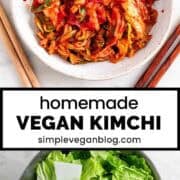
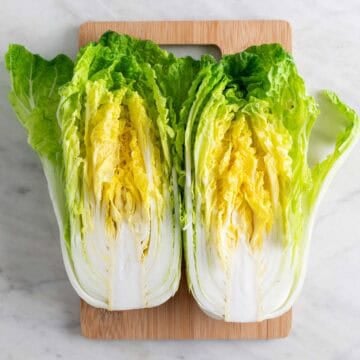
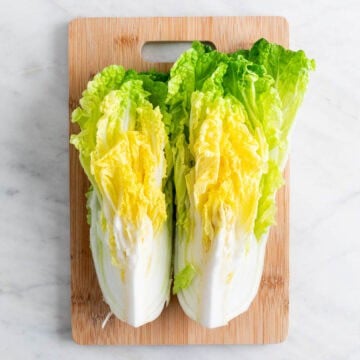
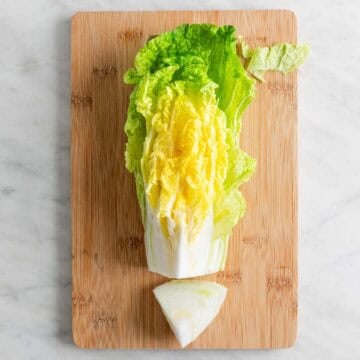
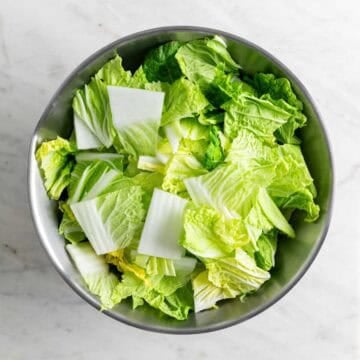
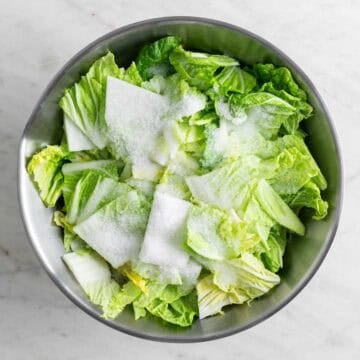
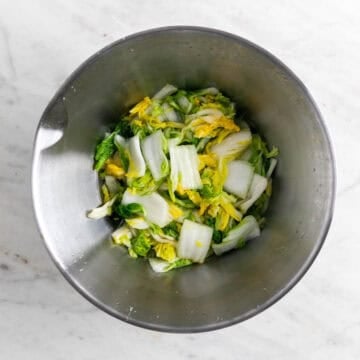
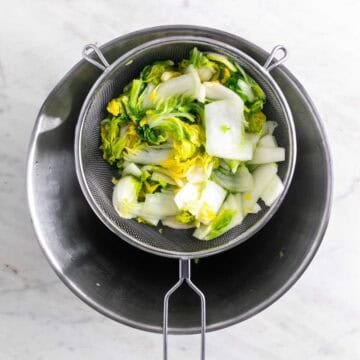
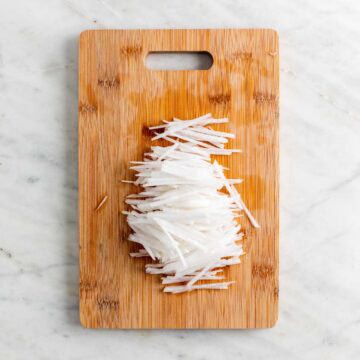
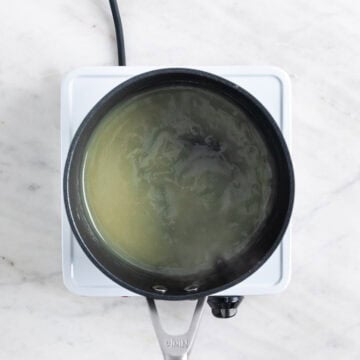
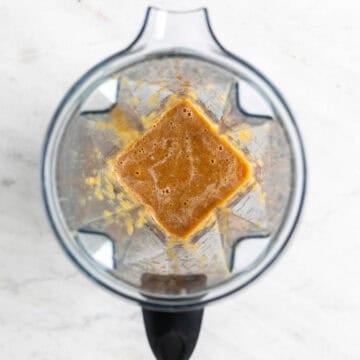
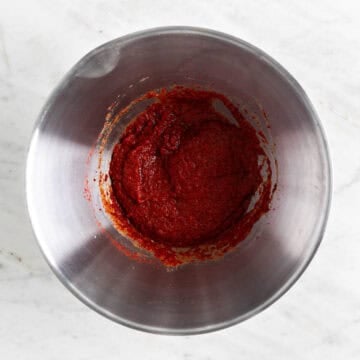
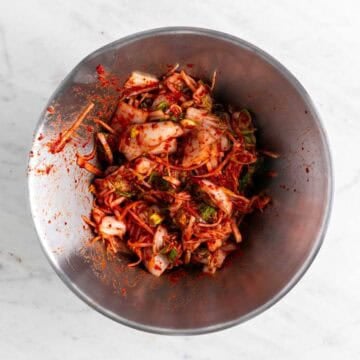
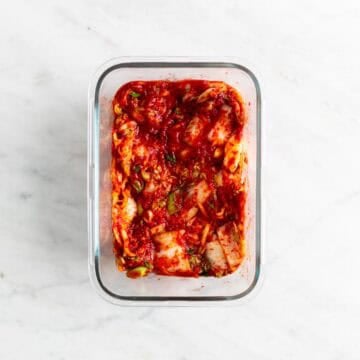
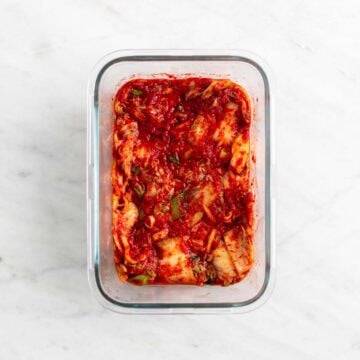
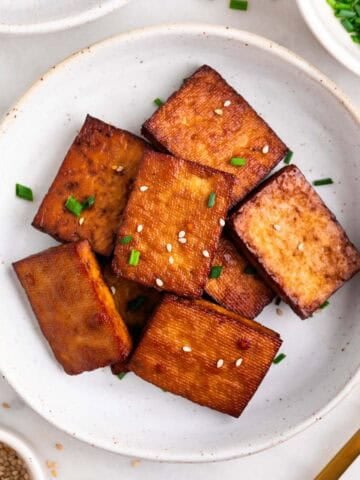
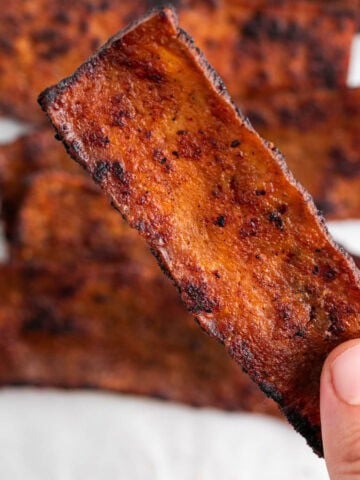


Jan says
This kimchi turned out so good! Just the right amount of spice and tang, and it was super easy to make. I let it ferment for about 5 days and it was perfect. I actually used it later in your kimchi stew recipe too!
Iosune Robles says
Thank you so much, Jan. I’m really glad it turned out well and that you used it in the stew too. Love hearing that it worked both ways!